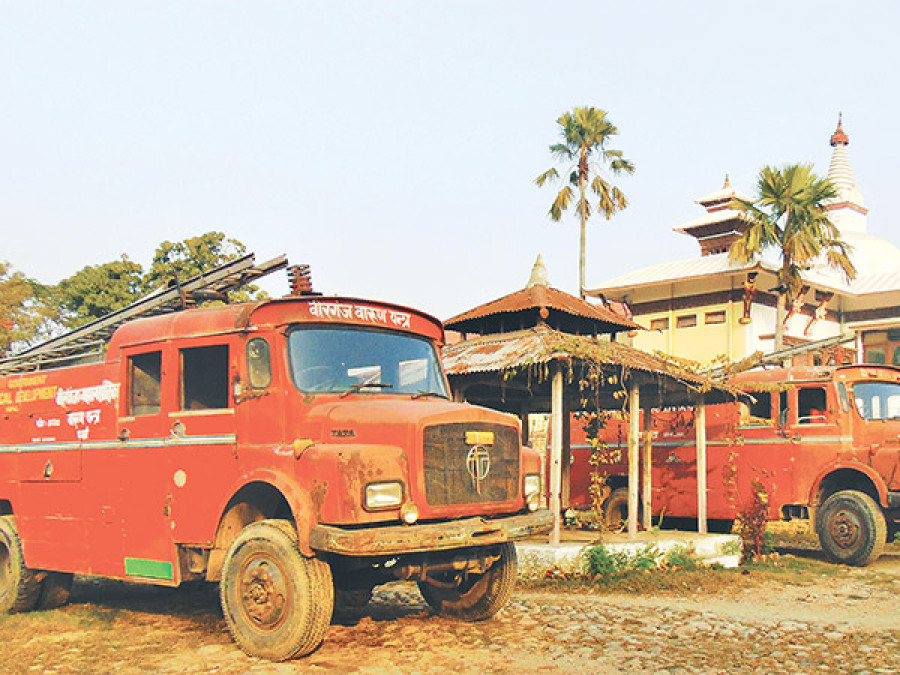Miscellaneous
Brigades poorly armed to fight fire
In the first week of February, a fire broke out in a cotton factory at Balkot in Bhaktapur.
Post Development Bureau
The incident is just a testament which portrays the reality of the response mechanism of the existing fire brigades in the Capital. Though Juddha Barun Yantra (JBY) has already marked its platinum jubilee, the condition of the first fire station in the country is no different than in 1937, the year of its establishment.
“It is even pathetic than 1937 if you compare the infrastructure,” said Kishor Kumar Bhattarai, chief of JBY.
According to international standard there must be at least one fire fighter for every 2,000 people and one fire engine for 28,000 people. However there are hardly nine functional fire engines, and two dozen firefighters in Kathmandu Valley for over five million people.
The problem doesn’t end here.
According to Bhattarai, many municipalities in the Valley do not have trained human resource to operate the fire engines. Similarly, the fire brigades have been facing problem arranging water, the most essential part of their job. The fire engines of JBY get water from Mahankal, on the outskirts of Kathmandu. Every time there is a fire, the fire trucks had to travel more than 20 km from to fetch water. The increasing traffic and the location of the JBY station have also become problematic.
Bhattarai said if there is a mass gathering at Basantapur area, it takes a long time for them to take out the fire engines from its station. JBY has proposed the government to set up sub-stations in Balkhu, Koteshwor, Chabahil and Balaju area so that they can response to fire incidents more effectively and quickly.
The worst case is the firefighters in the country do not have the equipment and gears in case of industrial disasters.
A report by Tribhuvan Man Singh Pradhan, who conducted a research in 2002 on petrol pumps in Valley for the Kathmandu Metropolitan City (KMC), shows that a fire in one petrol pump can create destruction in around one kilometre diameter. The study shows that most petrol pumps are located not more than 500 metres from one another, making them highly vulnerable in case of massive fire. An explosion or fire at one pump can destroy many others at a time, Pradhan’s report warns.
A Needs and a Capacity Assessment of Fire Preparedness in the Municipalities of Nepal, a joint study carried out by the government and UNDP in 2011, shows the situation is even dangerous at the local level. The report shows that the essential equipment like hoses and portable generators are not available in many municipalities while all of the fire engines are kept in a same place, despite the inefficiency of this system. Similarly, only a few fire engines have extension ladders to reach high rise buildings in case of fire. The report also showed that the provisions for emergency water and fuel storage are inadequate and there are few fire alarms and extinguishers.
Though the Local Self Governance Act makes it mandatory for all the municipalities and districts to have at least one fire engine, a report prepared by the Ministry of Federal Affairs and Local Development shows 33 districts still do not have fire engines; one third of 171 municipalities share similar fate. “This shows everyone is concerned of post disaster while nobody cares for early preparedness,” said Jibraj Pokhrel vice-chairman at Nepal Academy of Science and Technology.




 15.69°C Kathmandu
15.69°C Kathmandu









